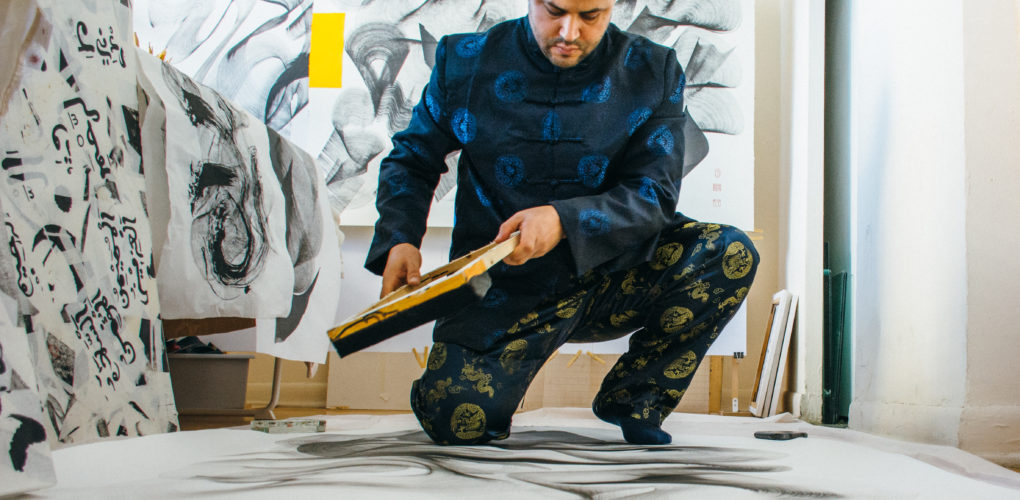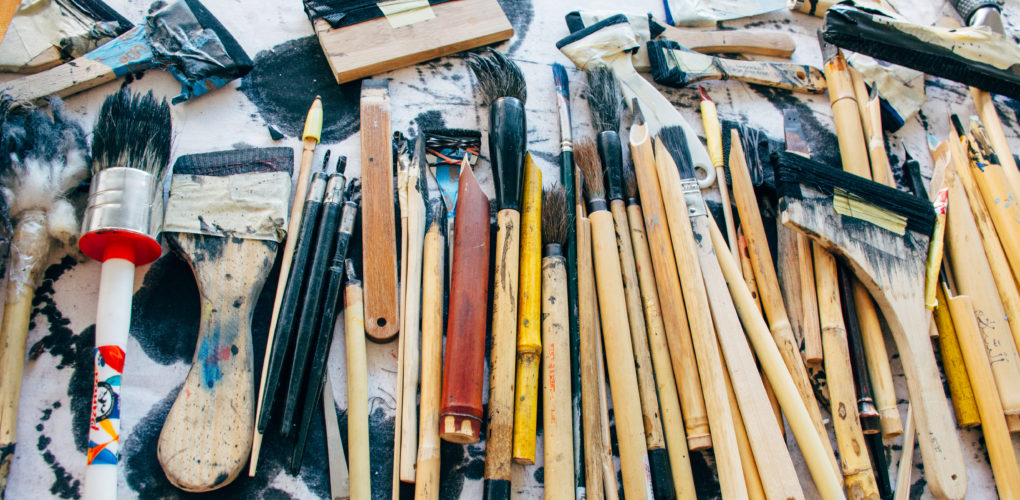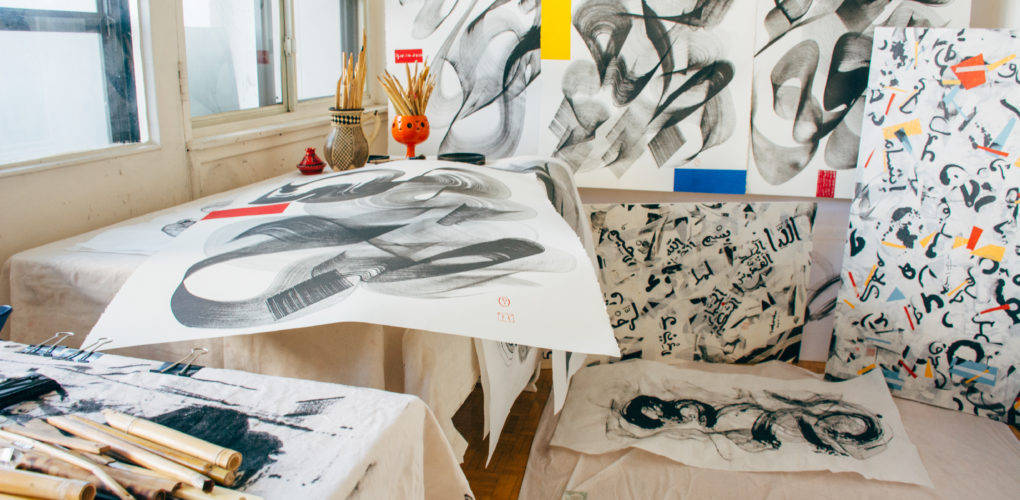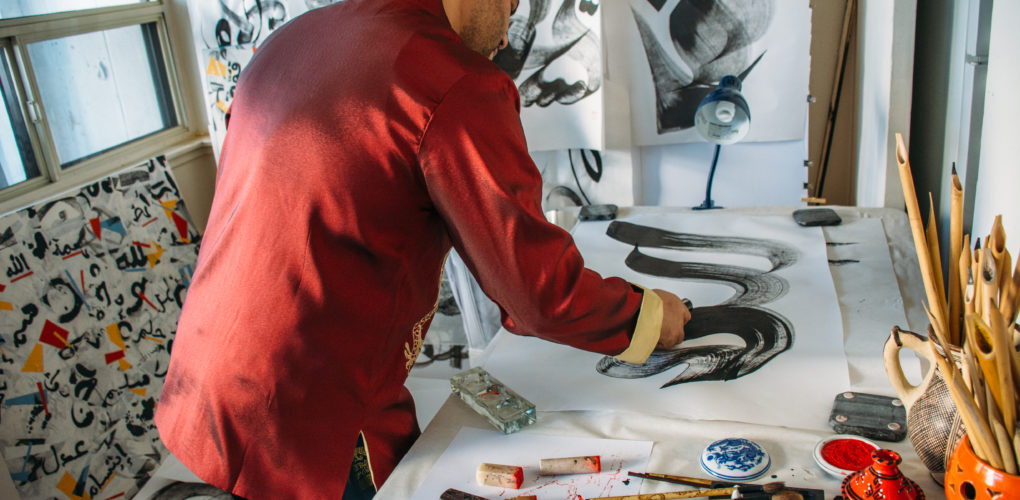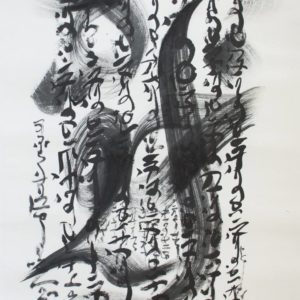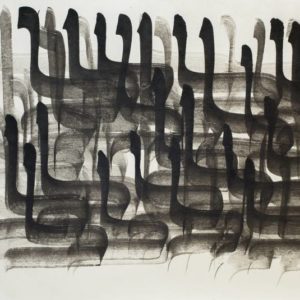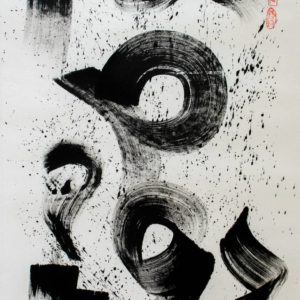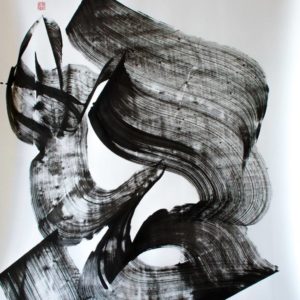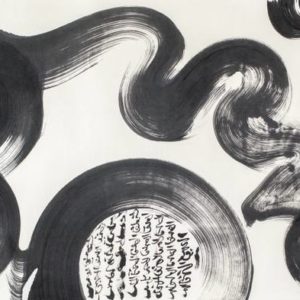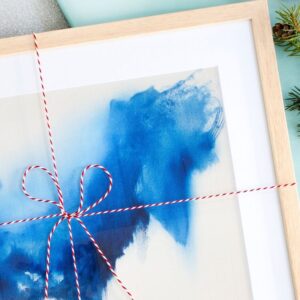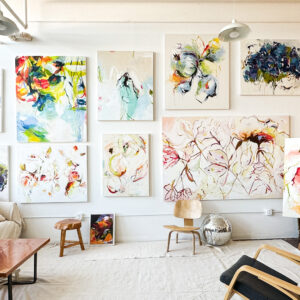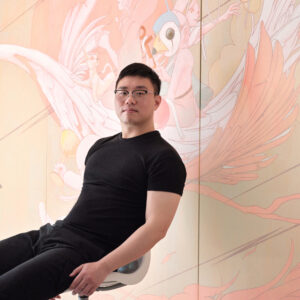Inside the Studio
 The Rhythmic Beauty of Calligraphy with Maomeii Be
The Rhythmic Beauty of Calligraphy with Maomeii Be
What are the major themes you pursue in your work?
My major themes in my work are the wisdom of words and their communication to the people. I work with words and their alphabets to convey messages though movements, rhythm and brush strokes. I use Chinese ink in a contemporary abstract calligraphy to be able to deal with the “movement, energy, and minimalism”. Everything I do comes from the soul. Calligraphy is primarily my practice of faith and meditation. I want the viewers to connect emotionally with it and create a way to help them communicate information about themselves and the world. I am interested in formless forms, irregular shapes and infinite lines created by randomness. I believe there is order in randomness. People do not have to understand my work, but if it can make them meditate and experience some emotion, I am happy.
How did you first get interested in your medium, and what draws you to it specifically?
I consider myself a self-taught artist. Drawing has been my hobby for as long as I can remember. While studying Arabic calligraphy, I discovered that I am actually interested in the boundaries of language in calligraphy. My passion and interest in Eastern Asian Calligraphy came in when I was watching a Chinese calligrapher performing in front of me. In 2009, I joined a Chinese Calligraphy workshop to learn the techniques of brush and ink. I was charmed by the visual and rhythmic harmony of Chinese calligraphy and the way forms are written vertically. Although it was a little frustrating at first, as I could not seem to control the brush like I wanted to, I gradually came to enjoy it.
My desire to know more about the way in which the written form is expressed in different cultures led me to travel and study with a few masters. The approach to Chinese calligraphy is deliberate, purposeful, and focused. In my work, I innovate with a mix of Arabic calligraphy with my uniquely personalized conception and calligraphic style based on Chinese calligraphic features. I want to forge a lifelong friendship with Chinese ink to produce random, evocative forms combining abstract brushwork and semi-abstract compositions.
How has your style and practice changed over the years?
I adopted the journey of a spontaneous and abstract style, which involves informal movement and creativity. My cognitive calligraphy artwork takes shape through drawings and paintings which are based on classical calligraphic styles and techniques that breaks the rules to create an a subjective expression emulating an improvisational approach. Researching Asian history, philosophy, storytelling, and martial arts have always been my constant influence to my abstract works, where my style beautifully incorporates the flowing lines of Chinese calligraphy and the larger planes of abstract expressionism as seen in the Western painting. As an artist, I spend hours designing the writing tools I need to create the form I have in mind. I look for tools and objects, which were initially designed for a different purpose other than writing and transform their purpose. I also taught myself the art of stone seal carving used for “signing” the work of calligraphy, which gives my work an authentic touch.
Can you walk us through your process? Do you begin with a sketch, or do you just jump in? How long do you spend on one work? How do you know when it is finished?
I do not have follow a specific process. I simply do it. I live it. I focus on how a single Arabic character evolves. I try to visualize words and alphabets I work with as “beings” and I give them life on the paper. I use the four treasures of study (brush, ink, paper and ink stone) to capture movement and life — making the brush dance and the ink sing. There is no going back and correcting when working with ink and rice paper. I often write what it comes to my mind, what I feel, and what I want to connect with after I walk in nature or after I mediate. I like to have more versions of the same subject. I am more spontaneous and creative that way. I leave room for the rhythm as a deliberate repetition that creates feelings of pattern and emphasis within the eyes of the viewer.
We tend to go after the meaning of the written words via calligraphy, and that is when it becomes fixed. The beauty of my work is in the composition of the strokes, different repetitions, layers, rhythmic intertwining, interactions of large and small scales of forms. On the other hand, it demands a considerable amount of inner effort. The action of drawing a brush stroke demands confidence. When any other thoughts occupy one’s mind, a perfect line is unattainable. Calligraphy is an art of lines and dots and I hope this connects us on a global level. To me, the artwork is finished when it finds a home.
Prefer to work with music or in silence?
I often listen to music when I am at my studio. According to Pierre Schaeffer, a sound goes through 1) attack, 2) sustain or evolution, and 3) decay. In calligraphy, one brush stroke comprises three moments: attack, development and ending. Music is liberating therefore helps me unleash my creativity and innovation. I enjoy the works of Watazumi Doso Roshi, Anouar Brahem, Kimio Eto and Nanae Yoshimura. Instruments like Koto Shakuhachi, Guzheng and Qin resonate well with my calligraphy. Their harmonic sounds in the air are first transformed to a musical calligraphy then to brushstroke on paper. Max Richter and Nils Frahm helps me add drama to the artwork.
Who are your favorite writers?
There are several writers I appreciate reading. My top four writers are: Ernest Hemingway, Naguib Mahfouz, Gabriel García Márquez and Yasmina Khadra. They symbolize the struggle of finding perfection in an imperfect world.
